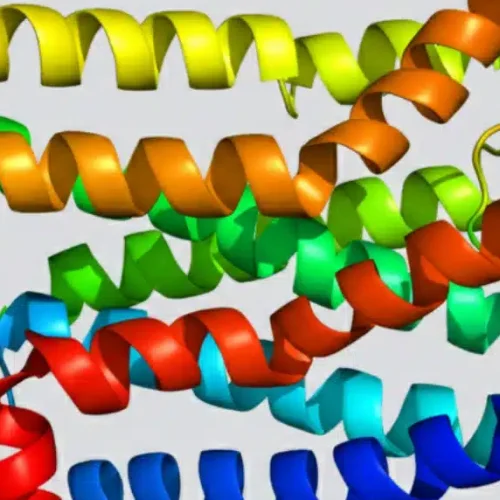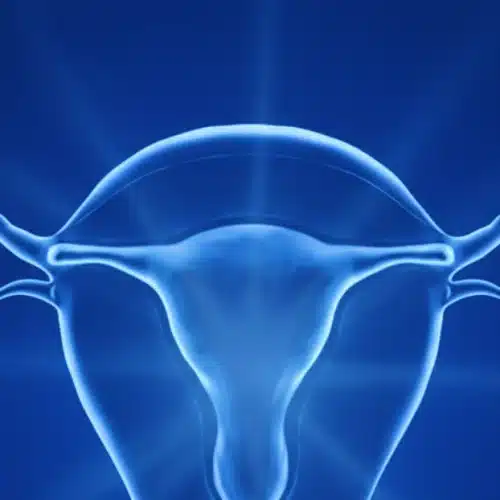Takeaways
-
Designer Estrogens 2.0 offer targeted bone and cognitive benefits while minimizing breast and uterine cancer risks.
-
The 2025 UCSF Phase II trial shows improved bone density and memory with no evidence of tissue proliferation.
-
Future hormone therapy may focus on precision, tissue-selectivity, and safer long-term outcomes for women.
The Evolution of Hormone Replacement: From Broad Spectrum to Precision
Hormone therapy once followed a one-size-fits-all approach. Early regimens aimed to replace declining estrogen levels but activated hormone receptors indiscriminately across tissues. As a result, women experienced relief from menopause symptoms but faced heightened risks of breast and uterine cancers. Traditional hormone replacement therapy (HRT) soon came under scrutiny after large-scale studies like the Women’s Health Initiative revealed concerning long-term effects. Since then, the field has moved steadily toward more selective and personalized solutions.
Bioidentical hormones emerged as one response, yet they still lacked precision at the cellular level. Medical researchers began asking a more targeted question: Can we isolate estrogen’s benefits in specific tissues while avoiding harmful activation in others? Fountain of Youth SWFL remains committed to exploring these innovations in women’s wellness. Our team regularly evaluates and monitors clinical advancements that aim to strike this essential balance.
Understanding Estrogen Receptors and Tissue Selectivity
Estrogen operates through two primary receptor subtypes—ERα and ERβ—each with distinct roles and tissue distributions. ERα appears predominantly in breast and uterine tissue, where its activation has been linked to cellular proliferation and cancer risk. In contrast, ERβ resides largely in bone, brain, and cardiovascular tissue, where it supports functions like memory retention and skeletal strength (Breast Cancer Research). This distribution sets the foundation for tissue-selective estrogen therapy.
By targeting ERβ while avoiding ERα, scientists can preserve critical benefits without endangering cellular integrity in cancer-sensitive tissues. Ligand binding and coregulator recruitment play major roles in this fine-tuned mechanism. Modern compounds can now “bias” estrogenic activity toward beneficial sites while leaving risky zones untouched. This level of control marks a turning point for hormone replacement therapies. It opens a future where menopause management no longer involves major health trade-offs.
What Makes Designer Estrogens 2.0 Different
Designer Estrogens 2.0 belong to a sophisticated class of selective estrogen receptor modulators (SERMs) with upgraded targeting capabilities. Unlike earlier SERMs, these compounds utilize next-generation binding algorithms to distinguish tissue type on a molecular level (PMC NCBI). Researchers program them to activate only the desired receptors. They often work as prodrugs, becoming active only in the presence of enzymes found in specific tissues. This mechanism reduces systemic exposure and risk.
Unlike traditional estrogens, which flood the body indiscriminately, Designer Estrogens 2.0 navigate cellular environments like precision tools. Legacy SERMs like raloxifene or tamoxifen provided partial solutions, mostly focusing on breast cancer prevention or bone support. But they lacked the cognitive benefits and often caused side effects such as hot flashes or uterine proliferation (PMC NCBI). Designer Estrogens 2.0 break that limitation by incorporating neuroactive and osteotropic properties with minimal collateral activity.
UCSF’s ESTRA-2025 Clinical Trial: What the Early Data Says
The University of California, San Francisco launched a Phase II clinical trial named ESTRA-2025 to evaluate this new class. The study enrolled 162 postmenopausal women between the ages of 50 and 65. Participants received daily doses over a 12-month period while undergoing monitoring for bone density, memory function, and cancer-related biomarkers. The outcomes showed promising results. Lumbar and femoral bone mineral density increased significantly, suggesting potent osteogenic action. Cognitive performance improved, with measurable gains in working memory and executive function, particularly in participants at risk for early decline. MRI scans and biopsies found no evidence of endometrial thickening or breast tissue proliferation. Biomarkers associated with estrogen-sensitive cancers remained stable or declined. These findings sparked optimism among clinicians, as no previous therapy had demonstrated such selective benefits without introducing measurable risks.
Potential Applications in Clinical and Preventive Medicine
This emerging therapy could transform how we approach both treatment and prevention. Women undergoing early menopause or surgical oophorectomy often face cognitive and skeletal challenges. Designer Estrogens 2.0 may offer a strategic solution for these cases. For patients with genetic predispositions to hormone-sensitive cancers, these compounds represent a safer alternative. Their highly selective mechanism could prevent complications while still addressing the physiological effects of estrogen deficiency.
The applications extend beyond immediate symptom control. Cognitive resilience in aging populations now sits at the center of public health goals. With brain-targeted receptor activity, this new generation of SERMs might help delay or even prevent neurodegenerative decline (Wikipedia). Many of our patients also benefit from holistic hormone-related therapies that support mood, libido, and metabolic function through consistent delivery methods such as pellet therapy. At Fountain of Youth SWFL, we actively monitor these clinical advances to ensure our protocols evolve alongside the science. We believe safer, smarter therapies will define the next era of women’s wellness.
Comparison Table: Designer Estrogens vs. Other Hormonal Options
| Therapy Type | Mechanism / Selectivity | Key Benefits | Cancer Risk (Breast/Uterus) | Limitations & Evidence Level |
|---|---|---|---|---|
| Designer Estrogens 2.0 | Tissue‑selective SERMs engineered to activate ERβ (e.g., in bone & brain), while avoiding ERα in breast/uterus; often as CNS‑permeable prodrugs. | Improved bone density, cognitive function; targeted CNS and skeletal effects. | Early data (2025 UCSF Phase II trial) show no proliferation in breast or endometrial tissue, and stable cancer biomarkers. | Evidence limited to 12‑month Phase II; long‑term safety and effects in high‑risk groups unknown. |
| Traditional HRT (estrogen ± progestogen) | Systemic activation of ERα and ERβ across multiple tissues. | Relief of vasomotor symptoms, prevention of osteoporosis, genitourinary symptom improvement, cardiovascular effects. | Increased risks of breast and endometrial cancer documented in large trials (e.g., WHI). | Broad tissue exposure; elevated cancer risk; caution advised for long‑term use. |
| Existing SERMs (e.g., raloxifene, tamoxifen) | Selective modulation: estrogenic in bone, antagonistic in breast; tissue‑specific profiles vary by agent. | Bone protection, breast cancer risk reduction. | Generally reduce breast cancer risk; uterine effects vary (e.g., tamoxifen may increase endometrial cancer risk). | Do not address menopausal symptoms; some risk of hot flashes and uterine proliferation depending on the agent (Wikipedia). |
| TSECs (e.g., bazedoxifene + conjugated estrogens) | Combination of estrogen plus SERM to achieve favorable tissue effects—agonist in bone, antagonist in endometrium. | Relief of hot flashes and bone protection with reduced endometrial risk versus estrogen alone. | Endometrial safety improved via SERM component; breast safety still under evaluation. | Available clinically; long‑term data modest; limited cognitive benefit (Wikipedia). |
FAQs: What Patients and Providers Are Asking
Are Designer Estrogens 2.0 already available for clinical use?
Not yet. They remain under investigation in clinical trials, but early data supports fast-track consideration.
Can this therapy be used by women with a family history of breast cancer?
Preliminary results show no stimulation of breast tissue. Final guidance will depend on ongoing trial outcomes.
What side effects have been reported so far?
Most participants tolerated the therapy well. Mild symptoms like headache or bloating occurred in fewer than 10% of cases.
How do Designer Estrogens compare to bioidentical hormone therapies?
Designer Estrogens are molecularly programmed for tissue selectivity, whereas bioidenticals often work systemically.
The Brain-Bone Connection: Why Dual Targeting Matters
Cognition and bone health deteriorate together during estrogen decline. The loss of ERβ stimulation disrupts memory consolidation and weakens skeletal structure. While previous therapies treated these as separate issues, Designer Estrogens 2.0 aim to address both simultaneously. Studies show that ERβ stimulation promotes neurogenesis in the hippocampus. At the same time, it drives osteoblast activity in bones (Wikipedia). This dual action improves balance, mental clarity, and physical resilience. Women at risk of both cognitive decline and fractures stand to benefit significantly. Questions? We’re here to help. Call us today at 239-355-3294 to explore tailored solutions for your hormone health.
Regulatory Status and Industry Movement
UCSF’s trial continues to draw attention from researchers and industry observers alike. Biotech firms have shown interest in licensing the compound family. The Food and Drug Administration has already granted early-phase fast-track status for broader testing. Regulatory timelines vary, but experts anticipate Phase III trials could begin as early as 2026. These will likely include broader population samples, including women with complex medical histories. Once safety and efficacy are confirmed at scale, commercial release could follow within two to three years. This movement reflects growing consensus that traditional hormone therapy needs a smarter, safer alternative. Designer Estrogens 2.0 may fulfill that role.
3 Practical Tips for Patients Interested in Emerging HRT Options
- Track your menopause timeline and symptoms. Knowing when changes began and how they affect your life guides better treatment conversations.
- Request estrogen receptor profiling. Emerging labs can help identify your ERα vs. ERβ expression patterns to support future personalized therapies.
- Discuss participation in upcoming trials. Some sites may begin recruiting for larger Phase III programs. Your doctor can help determine eligibility.
What This Means for the Future of Women’s Health
This new class of hormone therapy redefines what is possible for women in menopause. By separating benefit from risk at a cellular level, Designer Estrogens 2.0 offer a glimpse into a smarter future. Women deserve therapies that support vitality and provide a measurable energy boost without compromise. As trials evolve and approvals progress, clinicians and patients alike should remain informed. Precision-based therapies will reshape how we age, stay sharp, and remain strong. We believe in empowering women with science-backed options. For personalized guidance on your hormone journey, reach out to Fountain of Youth SWFL at 239-355-3294 today.
Medical review: Reviewed by Dr. Keith Lafferty MD, Medical Director at Fountain of Youth SWFL on September 12, 2025. Fact-checked against government and academic sources; see in-text citations. This page follows our Medical Review & Sourcing Policy and undergoes updates at least every six months. Last updated September 15, 2025.





